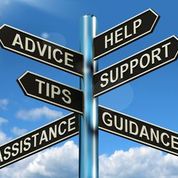Having progressed through more than 30 years in professional life, there is one resounding hallmark of accomplishment that I am proud of: I have always been a member of a uniquely cohesive and productive team. These are teams that are frequently recognized by competitors as a threat, by customers as “great organizations,” and internally as a great place to work. These teams have always enjoyed results above expectation, and have been free of office politics and internal strife. I am not saying that I am singly responsible for these results but I will admit to being a careful and dedicated student of the team model. I observe and note things that work and those that do not. I am very aware of leaders throughout my career that were effective and those that struggled to gain following. It occurred to me that there might be some interest in these observations and the particular characteristics that I exhibit in my own successful team building. It is important to remember that everyone has a boss; and to be a good leader and team member you must be able to follow as well as lead. Further, it must be understood that professional life in a corporation is no different than professional life as an athlete… you have to give it your all. Bring your best and leave it all on the playing field. That is the only way you can sleep at night knowing that you deserve the respect of those who follow you.
PROFESSIONAL LIFE IS FULL OF BAD NEWS: GET USED TO IT
One mandatory trait that must be honed is the ability to receive news.
Things don’t go right every day and when things go awry there are several people that should be informed. All of us have been one of those people who had to deliver bad news. Which team building skill can a leader leverage at the time of receiving bad news? Recognize that the news is not being delivered personally, and the message sender needs calm structured thought. They are required by some organizational mandate to inform you of the incident but they do not need MORE stress. We as leaders need to become very aware that there will be bad news and in some organizations it comes at a pretty steady rate. We have to get used to receiving bad news and more importantly, we need to find something positive to say when presented with this new information. People in every kind of team need a positive influence that they can rely on. This is the key to my message here, leaders make even bad days “not so bad.” We have to remain present in a good place and aware that there is far more to be thankful for than there is to be angry at. Positive thoughts are easy to come by when you look in the right place. Often, during the receipt of bad news you have the opportunity to solidify one or more of your standing directives. “I realize this is a setback but thank goodness nobody was hurt” speaks volumes to your mantra that safety of employees comes first.
Too many people live every day knowing that should they have to deliver bad news, their boss will react unpleasantly. This type of behavior erodes trust and leads to the development of silos in an organization. There is certainly a way to handle these messages that will make the team stronger even in light of bad news.
Every minute of every working day we have the potential to be a leader and a better team member. It requires a conscious effort and a belief that you are at work to do something great. What would happen if the same boss handled the message different ways depending on who the message sender was? This would immediately breakdown respect between those two team members and could have disastrous effect if that variation was to be observed by others in the team. Obviously, consistency is a key to successful team building. Every member of the team must know what to expect from you in good times and bad. They learn to count on that and rest in the belief that each of them can expect the same behavior. By knowing that their peers will be welcomed with the same demeanor they are, they feel safe in their work environment and communication throughout the organization flows free.
A TEAM IS MUCH MORE THAN A GROUP OF CO-WORKERS.
If you are serious about building a highly effective team you must accept this as a relentless challenge. Team building penetrates everything you do in a professional day and is the number one thing you will contribute to that organization. There is no competition between a high functioning team and a low functioning group when it comes to productivity and results. Whether a leader or a follower in the team, you have to contribute actively and consistently. When those around you know that they can expect a great performance from you then they raise their own bar. Honestly, they have no choice because expectation is the driver of success. This is not a banner for one upmanship but it is clear that if you decide you are going to bring an A game every day, your team mates will come to expect that and deliver their own best game that relies on your performance. This means you must be thinking team before you are thinking cost, or productivity, or leads. If you are leading the team, then being a benefit to the team is your first responsibility. Many professional athletes are leaders in their team but to do this, they have to be great athletes first. They can then lead and challenge others to elevate their game. As a team leader you have to be present every day and become very aware of the other members’ strengths. You cannot simply demand that they do one thing or another better; you have to recognize the strength they bring and then find a way to highlight that strength. Bring that particular characteristic to light and then watch them revel in the recognition. This is likely to motivate them to cultivate that capacity further and bring an even stronger game. If you are aware of a particular opportunity in a team member, the best you can do is recognize another team member who has that as a strength and get these two together. Leverage the strength of one to unload a burden on another. This is active leadership and will, without a doubt build a stronger team.
In closing, we have three distinct necessities in building a highly effective team:
1. Staff very carefully and understand why you are hiring any particular person.
a. Please see my previous post: 3 Ways to be sure you are hiring a good fit
2. Become a very good receiver of news good and bad.
3. Become exceptionally focused on the cultivation of a cohesive team.
There are plenty of other things that must be considered in the development of a great team and they will be presented in future posts.











